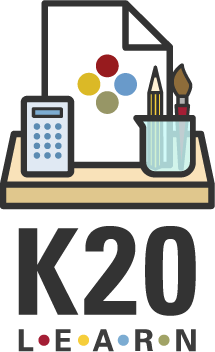Summary
Students are exposed to podcasting and develop their own podcast.
Essential Questions
How do different types of podcasts use sound and storytelling to connect with listeners?
What makes a podcast effective, and how can we use those elements to create our own?
Snapshot
Engage
Students make observations and create questions as they listen to a podcast segment centered around middle school podcasting.
Explore
Students discuss what podcasts are of interest to them and other students at their school before learning about the most common types of podcasts.
Explain
Students identify the common elements that are included in podcasts.
Extend
Students create a podcast.
Evaluate
Students present their podcasts.
Materials List
Activity Slides (attached)
Sticky notes (two per student)
Podcast Teacher Resource (attached)
Podcast Types Posters (attached)
Podcasts Sort (attached; one per pair of students)
Podcast Planning Template (attached; one per student)
Learning Goals
Identify types of podcasts.
Explore elements of podcasts.
Create a podcast.
Engage
Begin the activity by displaying slide 2 from the attached Activity Slides. Display slides 3–4 and share the essential questions and learning goals with students to the extent you feel necessary. Move to slide 5 and instruct students to pick a statement that best matches their experience with podcasts. Have students hold up the number of fingers that represents their experience, from 1 to 5. Pick a few students to share their experience with podcasts.
Pass out two sticky notes to each student. Move to slide 6 and Introduce the I Notice, I Wonder instructional strategy to students. Inform students that they are going to listen to a short segment from the podcast “This American Life.” As they listen or after listening, they should write down something they noticed about the story and a question they have about the story on the two sticky notes provided.
Before playing the podcast, instruct students to listen for the sounds they hear, if the narrator is formal or casual in tone, and to look for the elements of storytelling in the podcast such as emotional tones, pacing, and viewpoints being shared. Play the podcast.
After playing the podcast segment, move to slide 7. Have students place their sticky notes on the board. Read out several of the sticky notes. Provide students time to have a discussion about the podcast segment by using the discussion questions on the slide.
Display slide 8 and introduce the Fiction in the Facts strategy to students. Tell students there are two real podcast titles and one fictional podcast title listed. Provide time for students to discuss with someone next to them which is the fictional podcast. Ask for someone to share which podcast is fictional and reveal the answer. Repeat this process on slides 9–10.
Explore
Move to slide 11 and direct students to walk around the room and read the podcast posters, which display types of podcasts. Tell students to gather at the poster that displays the type of podcast they would most likely be interested in listening to. Provide time for students to have a discussion about what interests them about that type of podcast. Ask for a volunteer at each poster to share what was discussed.
Next, move to slide 12 and tell students to gather at the poster that displays the type of podcast they would be least likely to listen to. Again provide time for students to discuss, then ask for a volunteer at each poster to share what was discussed.
Finally, display slide 13 and have students stand next to the poster that displays the podcast type they think other students at school would most likely be interested in. Tell students to think of two ideas for a podcast of that type that they could possibly create for an audience of fellow students.
Have students move back to their seats. Display slide 14 and tell students they are going to listen to a short podcast that covers the most popular types of podcasts, “Podcast Categories Explained.” Tell students to think about how this podcast is different from the podcast they listened to earlier. Play the podcast.
Consider splitting the lesson over two class periods and stopping here for the first day.
Explain
Display slide 15 and have students pair up. Pass out the Podcasts Sort and tell students to sort the cards into sets that are about the same podcast. After students finish, ask students to share out which types of podcasts are represented in each set. Ask students what they notice about how the podcasts are structured.
Extend
Display slide 16 and pass out the attached Podcast Planning Template handout to each student. Provide time for students to begin planning their podcast.
Relay any specific parameters at this time such as how much time they will have to create the podcast and also how long their podcast should be. For beginning podcast creators, a suggested time is around five minutes.
Evaluate
When students are ready to present their podcasts, display slide 17 and tell students to take out a piece of notebook paper. Introduce the Exclaim and Question strategy to students.
Ask students to listen carefully to each classmate’s podcast and write down one aspect they enjoyed or found strong, along with a question they have about the student’s podcast creation process. After each podcast is presented, ask a couple of students to share what they have written down.
Follow-Up Activities
Consider having students create recurring episodes if there is an interest in continuing podcasting. Look for opportunities for students to share their podcasts with the community or at podcast competitions.
Research Rationale
K20 Center. (n.d.). When “Journalism Kids” do better: A reassessment of secondary and postsecondary achievement and activities review. Literature Review. https://learn.k20center.ou.edu/literature-review/4897
Resources
K20 Center. (n.d.). Exclaim and question. Strategies. https://learn.k20center.ou.edu/strategy/94
K20 Center. (n.d.). Fiction in the facts. Strategies. https://learn.k20center.ou.edu/strategy/60
K20 Center. (n.d.). I notice, I wonder. Strategies. https://learn.k20center.ou.edu/strategy/180
Menjivar, Jonathan. “Anchor babies.” This American life, 4 Apr. 2025, www.thisamericanlife.org/449/middle-school/act-four-2
NotebookLM. (2025, May). The deep dive: A podcast about types of podcasts. Google




